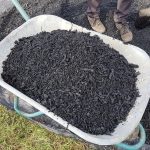Crop Rotation
Crop rotation is a common agronomic practice that involves the systematic sequencing of different crops in a specific field over several seasons. This technique aims to enhance soil fertility, control pests and diseases, and optimize crop yield. By diversifying the plant species in a given area, farmers can break the lifecycle of pests and diseases that target specific crops, while also promoting soil health through the varied nutrient requirements of different plants.
Prevention of pests and diseases
Crop rotation serves as a powerful strategy for breaking pest and disease cycles in agriculture. By alternating the types of crops grown in a specific field over time, farmers disrupt the life cycles of pests and pathogens that are specific to particular crops. Different crops have varying susceptibility to pests and diseases, and by changing the planting sequence, the buildup of specific pathogens or pests targeting a particular crop is thwarted. For example, if a field has been planted with a susceptible crop in one season, rotating to a different type of crop the following season can interrupt the continuity of pests or diseases that would have thrived on the previous crop. This practice helps reducing the population of crop-specific pathogens and pests, thereby mitigating the risk of infestations and diseases.
| Crop Rotation Family | Example Crops |
|---|---|
| Grass Family (Poaceae) | Wheat, Barley, Corn, Oats, Rye |
| Legume Family (Fabaceae) | Soybeans, Peas, Lentils, Alfalfa, Clover, Fava Beans |
| Nightshade Family (Solanaceae) | Tomatoes, Potatoes, Peppers, Eggplant |
| Cabbage Family (Brassicaceae) | Broccoli, Cabbage, Cauliflower, Kale, Mustard, Turnips |
| Cucurbit Family (Cucurbitaceae) | Cucumbers, Squash, Pumpkins, Melons |
| Root Vegetable Family (Apiaceae) | Carrots, Parsnips, Celery, Parsley, Dill |
| Allium Family (Amaryllidaceae) | Onions, Garlic, Leeks, Shallots |
| Bean Family (Fabaceae) | Fava Beans, Chickpeas, Peanuts, Lentils |
| Sunflower Family (Asteraceae) | Sunflowers, Lettuce, Chicory, Endive |
| Quinoa Family (Amaranthaceae) | Quinoa, Amaranth |
Nutrient Cycling
Different crops have varying nutrient requirements. Some crops are heavy nitrogen feeders, while others may have a higher demand for phosphorus or potassium. By rotating crops with different nutrient needs, farmers can prevent the depletion of specific nutrients in the soil and promote a more balanced nutrient profile.
For instance, leguminous crops, like peas or soybeans, play a crucial role in nutrient cycling by forming symbiotic relationships with nitrogen-fixing bacteria, enriching the soil with biologically available nitrogen. Deep-rooted crops, such as certain grains or brassicas, can help retrieve nutrients from deeper soil layers, making them available for subsequent crops.
Cover Crops
Introducing cover crops into the rotation is an effective way to protect the soil during non-cropping period.
Cover crops, strategically planted during intervals when the primary crop is not in production, benefits to the agroecosystem. They serve as green manure and contribute organic matter to the soil upon decomposition. This added organic matter enhances soil structure and microbial activity.
In addition, the root systems of cover crops help prevent soil erosion, stabilize slopes, and improve water retention.
Furthermore, cover crops act as dynamic nutrient managers. They extract excess nitrogen and other nutrients from the soil, subsequently preventing nutrient leaching and improving overall nutrient availability.
Beyond these agronomic advantages, cover crops suppress weed growth, break pest and disease cycles, and provide habitat for beneficial insects. By incorporating cover crops into crop rotations, farmers not only improve soil health but also contribute to enhanced resilience, reduced reliance on external inputs, and a more sustainable and regenerative approach to agriculture.
For example, cover crops like clover or winter rye prevent soil erosion, suppress weeds, and add organic matter to the soil when they are incorporated.
Allelopathic Effect
Many pests and diseases are host-specific, meaning they target a particular crop. Crop rotation disrupts their life cycles by removing the host crop for a season, reducing the likelihood of an infestation.
When rotating crops, the life cycles of these pests and diseases are interrupted, as they struggle to adapt to the changing environment. Furthermore, certain crops have the ability to break pest cycles and suppress weeds by acting as natural repellents or disruptors. They release allelopathic compounds, which are chemical compounds that can suppress pests, diseases, and weeds.
For example, crops such as, common buckwheat (Fagopyrum esculentum), rye, barley, sunflower (Helianthus annuus L.), sweet clover, Sudan grass (Sorghum sudanense L.), and cowpea can alleviate infestations of various weed species.
Biodiversity
Beyond its immediate agronomic benefits, taxonomic diversity within crop rotations contributes to the promotion of on-farm biodiversity. Diverse rotations attract and support a wider array of beneficial insects, birds, and microorganisms, creating a balanced agroecosystem that transcends the boundaries of individual crops.
Crop rotation profoundly influences microbial diversity in agricultural soils. When different crops are rotated, they release unique root exudates, which are distinct carbon compounds. These compounds serve as a magnet for various microorganisms like bacteria and fungi. The diversity in these exudates from different crops creates a varied environment, attracting a wide range of microbes.
This diversity is crucial for nutrient cycling, breaking down organic matter, and supporting plant health. Therefore, the practice of crop rotation creates a vibrant and diverse microbial community, contributing to improved soil fertility and sustainable agriculture.
Yield Advantage of Crop Rotation
Data source: NCSU
Crop rotation and water conservation
Crop rotation plays a pivotal role in water conservation within agricultural ecosystems. By alternating crops in a sequence, farmers can optimize water usage and reduce the risk of water-related stress. Diverse crop rotations often include plants with varying water requirements, allowing for more efficient use of water resources. For instance, deep-rooted crops in one season can access moisture from deeper soil layers, while shallow-rooted crops in the following season utilize surface water.
Additionally, certain crops enhance soil structure, promoting better water infiltration and retention. The reduced prevalence of continuous monoculture in crop rotation minimizes water runoff and enhances overall water-use efficiency. This sustainable practice not only safeguards against water scarcity but also contributes to the long-term resilience of agricultural landscapes in the face of evolving climatic conditions.
Diversifying crop species, each with distinct water requirements and root structures, optimizes the soil’s water-holding capacity.
Considerations for Effective Crop Rotation
Crop Rotation Planning
Successful crop rotation requires careful planning. Farmers should consider factors such as the growth habits of different crops, their nutrient requirements, and the climate in the region. Creating a detailed rotation plan for several years in advance helps optimize the benefits.
Soil Health Assessment
Regular soil testing is crucial to assess nutrient levels and soil health. Based on the results, farmers can make informed decisions about which crops to include in the rotation and whether additional amendments are necessary.
Market Demand and Crop Economics
Farmers should also consider market demand and crop economics when planning rotations. Some crops may have higher market value during specific seasons, influencing the choice of crops in the rotation to maximize economic returns.
Equipment and Labor
Different crops may require specific equipment and varying levels of labor input. Farmers should assess the availability of machinery and labor resources to ensure that the chosen rotation is practical and feasible.
Examples of Successful Crop Rotation
Corn-Soybean Rotation
A classic example in many regions involves rotating corn with soybeans. Corn is a heavy nitrogen feeder, while soybeans fix nitrogen in the soil. This rotation not only balances nutrient requirements but also disrupts the life cycles of corn-specific pests and diseases.
Potato Rotation
To manage the risk of soil-borne diseases and pests common in potato cultivation, farmers often rotate potatoes with non-host crops such as oats or barley. This break in the potato cycle helps control diseases like late blight and reduces the need for chemical interventions.
Wheat-Legume Rotation
Alternating wheat with legumes like peas or lentils is beneficial for both nitrogen fixation and disease control. Legumes enrich the soil with nitrogen, benefiting the subsequent wheat crop, while also breaking the cycle of wheat pests and diseases.
Summary
Crop rotation is a fundamental agronomic practice that offers a holistic approach to sustainable and productive farming. By carefully planning rotations, considering soil health, and accounting for regional factors, farmers can optimize crop yield, reduce the dependence on chemical inputs, and contribute to healthy and sustainable agricultural systems.







